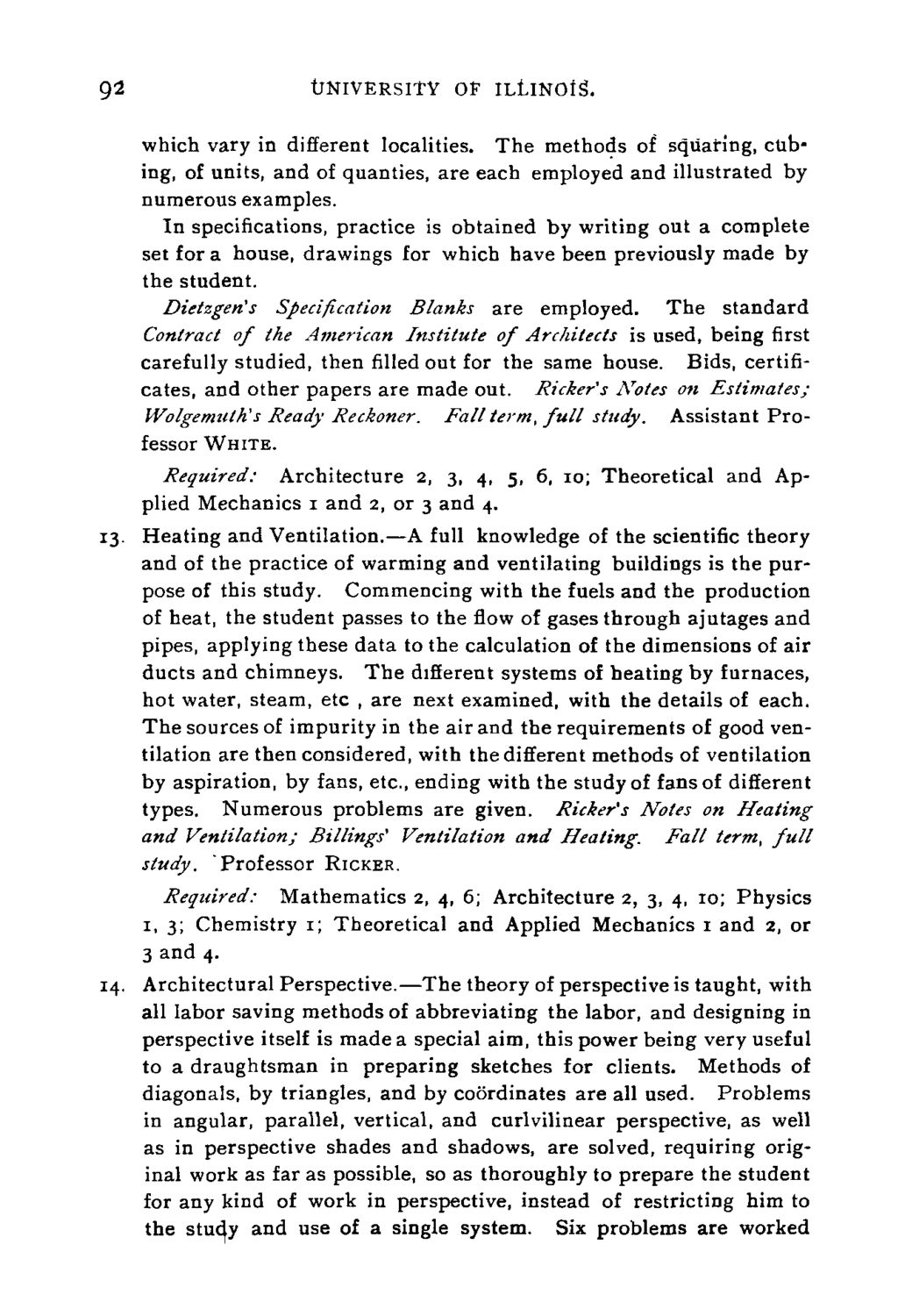| |
| |
Caption: Course Catalog - 1893-1894
This is a reduced-resolution page image for fast online browsing.

EXTRACTED TEXT FROM PAGE:
92 tTNIVERSITY OF ILLINOIS. which vary in different localities. The methods of squaring, cubing, of units, and of quanties, are each employed and illustrated by numerous examples. In specifications, practice is obtained by writing out a complete set for a house, drawings for which have been previously made by the student. Dietzgen's Specification Blanks are employed. The standard Contract of the American Institute of Architects is used, being first carefully studied, then filled out for the same house. Bids, certificates, and other papers are made out. Ricker's Notes on Estimates; Wolgemiilh's Ready Reckoner'. Fall term, full study. Assistant Professor WHITE. Required: Architecture 2, 3, 4, 5, 6, 10; Theoretical and Applied Mechanics 1 and 2, or 3 and 4. 13. Heating and Ventilation.—A full knowledge of the scientific theory and of the practice of warming and ventilating buildings is the purpose of this study. Commencing with the fuels and the production of heat, the student passes to the flow of gases through ajutages and pipes, applying these data to the calculation of the dimensions of air ducts and chimneys. The different systems of heating by furnaces, hot water, steam, etc , are next examined, with the details of each. The sources of impurity in the air and the requirements of good ventilation are then considered, with the different methods of ventilation by aspiration, by fans, etc., ending with the study of fans of different types. Numerous problems are given. Ricker's Notes on Heating and Ventilation; Billings' Ventilation and Heating. Fall term, full study. Professor RICKER. Required: Mathematics 2, 4, 6; Architecture 2, 3, 4, 10; Physics 1, 3; Chemistry 1; Theoretical and Applied Mechanics 1 and 2, or 3 and 4. 14. Architectural Perspective.—The theory of perspective is taught, with all labor saving methods of abbreviating the labor, and designing in perspective itself is made a special aim, this power being very useful to a draughtsman in preparing sketches for clients. Methods of diagonals, by triangles, and by coordinates are all used. Problems in angular, parallel, vertical, and curlvilinear perspective, as well as in perspective shades and shadows, are solved, requiring original work as far as possible, so as thoroughly to prepare the student for any kind of work in perspective, instead of restricting him to the study and use of a single system. Six problems are worked
| |